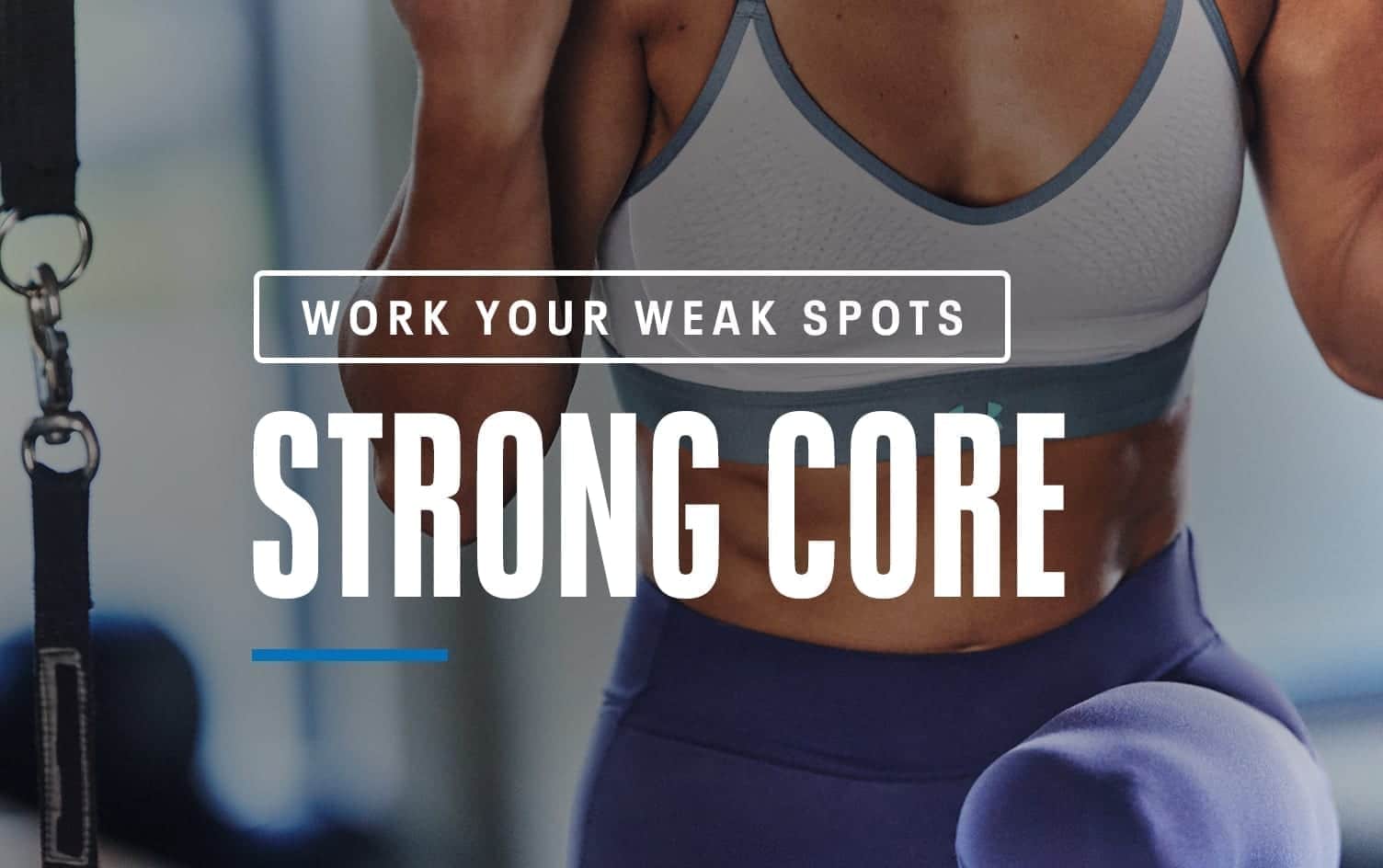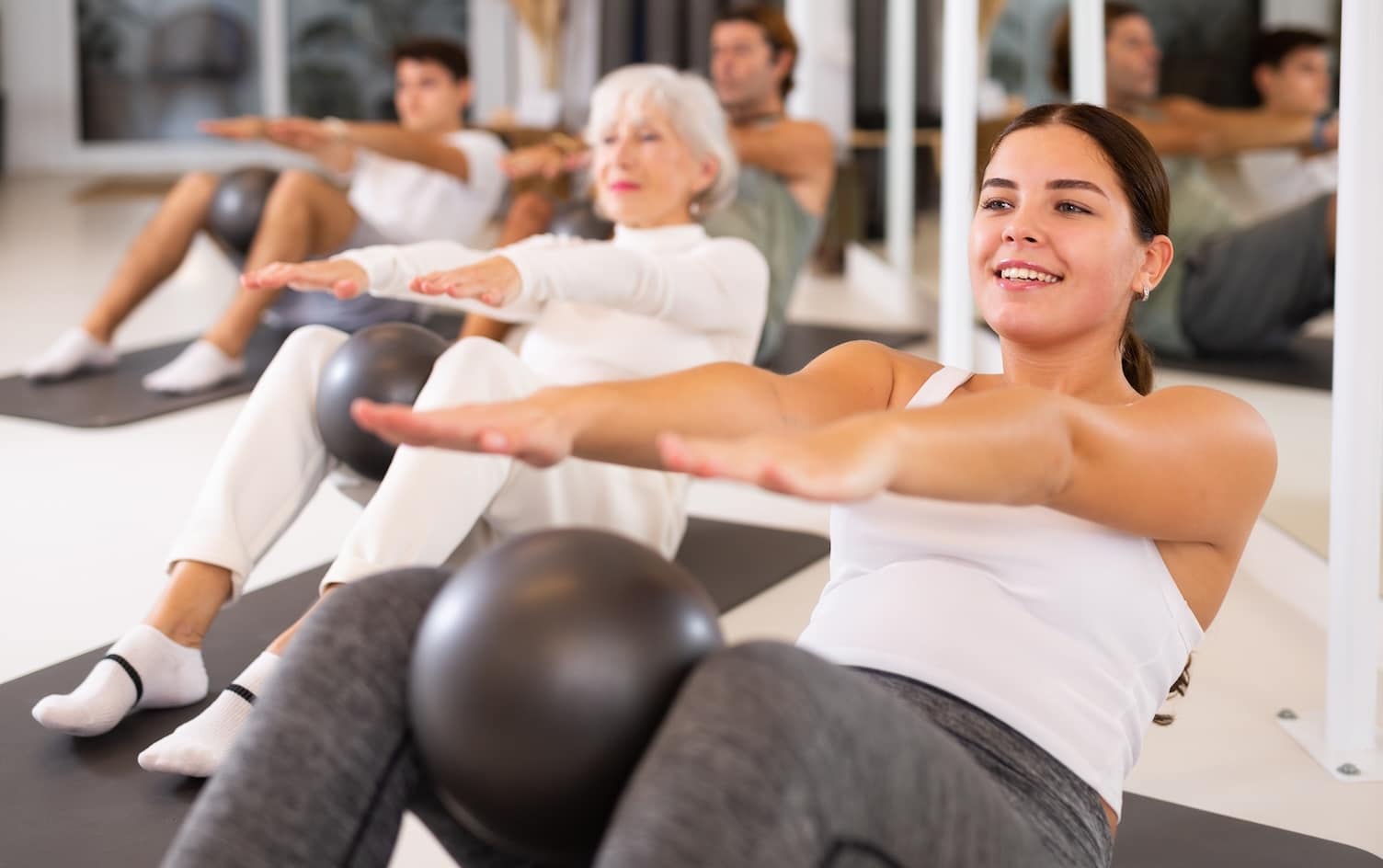Most people know they should have a strong core, but they don’t necessarily know why. The reason is pretty simple. “Your body, no matter how big your muscles may be, is only as strong as your core,” says Nicole Lombardo, DPT, a physical therapist and strength and conditioning coach. “If you’re unable to brace and stabilize your trunk, your body is at an inevitable risk for overuse or injury.”
Often, the signs of a weak core aren’t noticeable until you get injured. One of the biggest reasons is that people often assume their core is just the “six-pack” muscles. “The core isn’t just abs,” notes Lindsay Wandzilak, the owner and head coach at The Daily. “It’s the front, back and sides of the middle body,” she explains.
There are quite a few muscles involved, including the rectus abdominis (your six-pack muscles), internal and external obliques, transverse abdominis, spinal erectors and more. “There’s a lot of demand on your core to support and strengthen your body during most movements, and paying attention to this area allows you to breathe deeper, balance better, move swiftly, stand taller and live comfortably,” Wandzilak says.
Having a weaker core is incredibly common, especially since many people live a sedentary lifestyle, says Celestine Atalie, a certified personal trainer and senior trainer at P.volve. “The body likes to be efficient and will follow the path of least resistance. Sitting all day tends to create tight hip flexors that pull the front of the pelvis down, abdominals that lose strength and can’t support the body, low back pain from overly tight back muscles and weak glutes that don’t fire properly.”
So, what’s the fix? Getting a stronger core takes time and commitment, but experts say adding these exercises to your usual workout is a great start.
PLANK
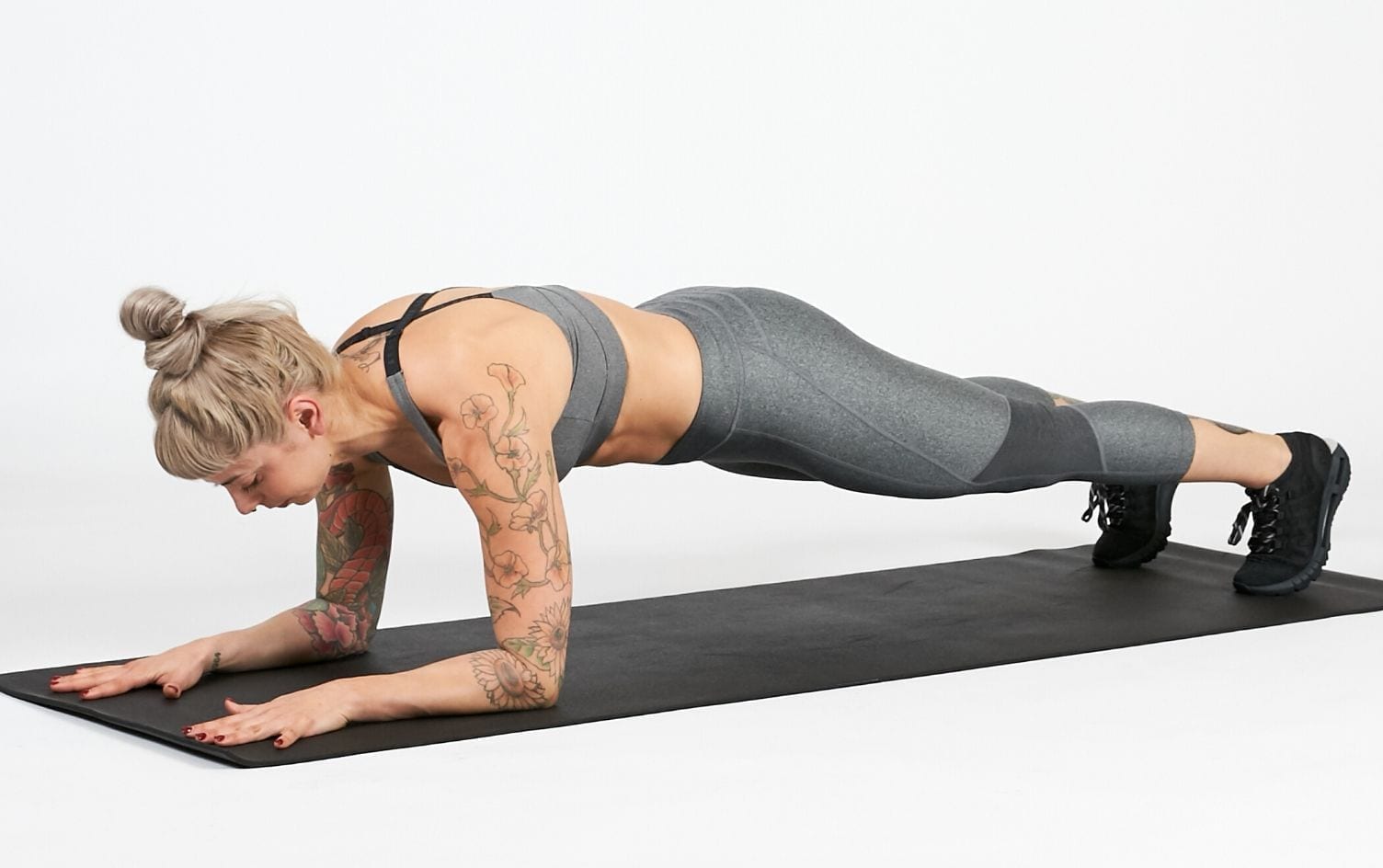
Always a classic, the plank requires you to brace your entire core to hold your body in a static position, Lombardo says. “This static hold works all of the core muscles much better than situps do. It also promotes finding and maintaining a neutral spine, which is very important for everyday life.”Doing a plank correctly is tricky, so it’s important to pay attention to form.
The move: Stack your shoulders over your elbows. If you choose to do the plank on your forearms, keep them parallel to each other. “This keeps your shoulders in an externally rotated position, which is safe for the shoulders and avoids rounding of the upper back,” Lombardo explains. From here, slightly tuck your pelvis to ensure your back is in a neutral position. Squeeze your glutes and take deep breaths as you hold this position for 15–30 seconds.
SIDE PLANK WITH HIP DROP
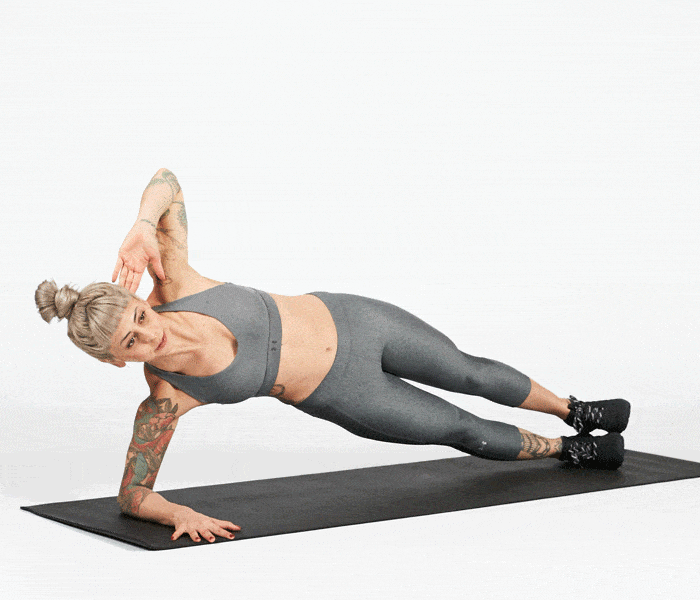
“This exercise helps you get stronger in your obliques because you are using your body weight to thrust up,” says Joshua Lipsey, trainer and founder of Core Fitness. “It really targets the internal and external obliques, which is great for keeping your back in place and assists in shock absorption when running.”
The move: Lying on your side, place your elbow directly under your shoulder, with your forearm extending forward. Stack your feet and lift up into a side plank. Your body should be in a straight line from the top of your head to your feet. From here, slowly drop your hips toward the floor, then lift them back up to the starting position. Complete 10 reps, then switch to the other side.
BRIDGES WITH LEG EXTENSION
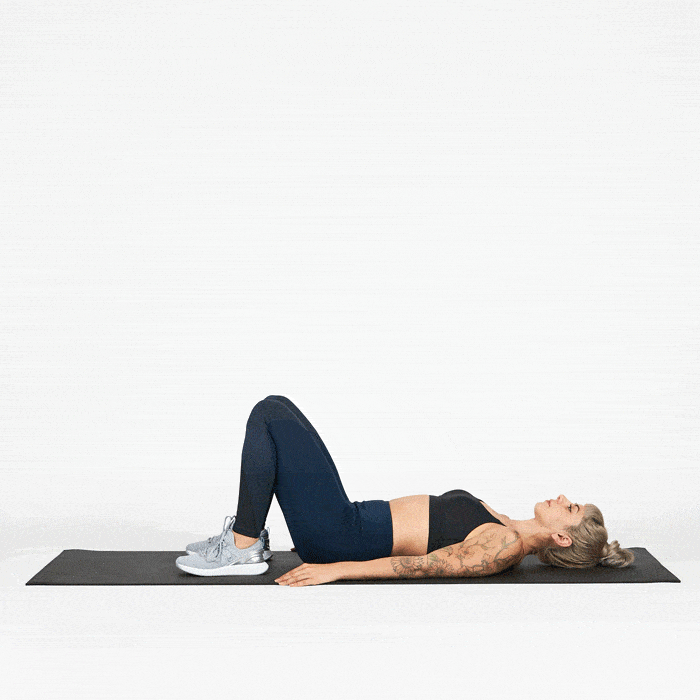
“Even though this is primarily done as a glute-strengthening exercise, it helps work all the core muscles,” Lombardo says. As you lift your leg, you have to avoid rotating your hips, which helps strengthen the tiny muscles around your spine. “Practicing this type of stabilization in a workout will translate to stabilizing your spine when moving throughout life, such as when lifting and carrying grocery bags from the car into your home.”
The move: Lie on your back with your knees bent and feet flat on the ground. Before bridging up, perform a pelvic tilt by tucking your hips under. Maintain this tilt as you bridge up until your body forms a straight line from shoulders to knees. Then, extend one leg from the knee until it’s straight. As you’re getting the hang of this exercise, place your hands on your hips to see that, as you extend your leg, the opposite hip doesn’t drop. Complete 15 repetitions on one side, then switch to the other.
BIRD DOGS
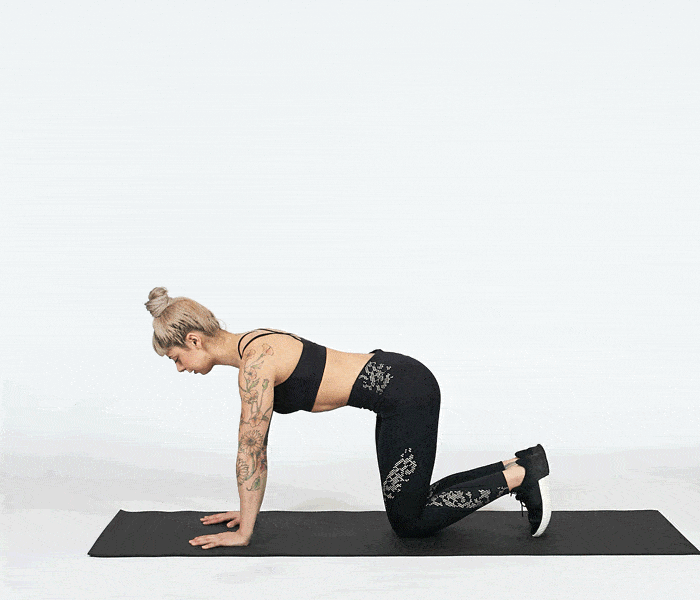
“Bird-dogs are sneaky hard,” says Kelly Bryant, a certified personal trainer and yoga teacher. “They require that you can manage your breath and intra-abdominal pressure, keep your low-back neutral, extend your arm overhead and use your glute to reach your leg back.”
Bryant also likes exercises that get people down on the floor, since we don’t normally spend a lot of time there. “It’s good for your brain to do novel movements, and it’s functionally useful in the event you lose something under your bed, want to get down on the floor to play with a baby, or otherwise need to get up and down off the floor. You’ll quickly realize it if that’s a challenging movement pattern for you.”
The move: Come onto all fours, with your hands directly underneath your shoulders and your knees directly under your hips. Arch and round your back until you find a neutral spine. Gently brace your core, and on an exhale, extend the opposite arm and leg, imagining a straight line from your outstretched hand to your extended foot.
Your low-back should be completely still through the whole movement. If you want to test yourself, Bryant recommends putting something like a yoga block on your low-back or setting your camera up to record yourself so you can feel or see if your low back moves.
Complete 8 repetitions on one side, then switch to the other.
SIDE-TO-SIDE PLANK
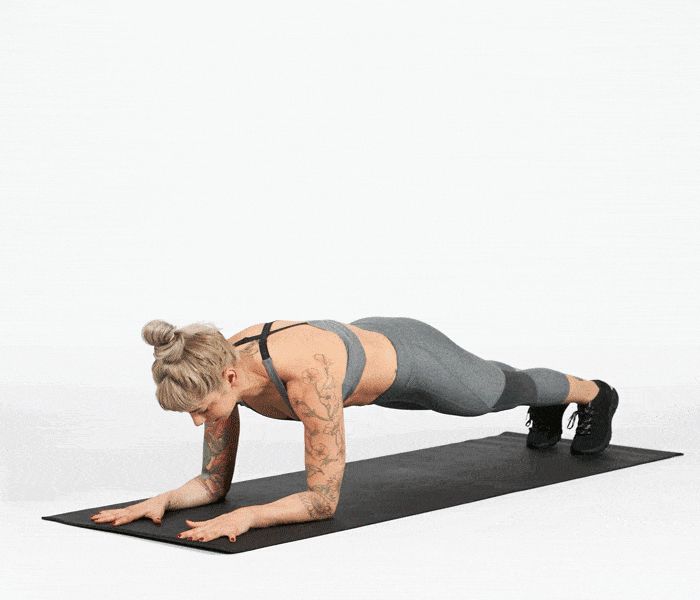
“This is a wonderful core movement because it incorporates the front, back and side body simultaneously,” Wandzilak says.
The move: Start in a plank position, then twist hips to drop down on one side touching the ground if you can. Keep the shoulders, mid-back, and hips in one line. Come back to the center, then twist to the other side. Complete 16–24 repetitions total.
STIR THE POT

It’s ideal for developing core stability, Lipsey says, and it’s a total-body exercise that heavily recruits the core.
The move: Start in a plank position with your forearms on the stability ball. Keep your feet about hip-width apart (or even wider) for a solid base. Squeeze your glutes and keep your body in a straight line from head to toe as you slowly move your elbows in a circle to the left for 5 repetitions, then to the right for 5 repetitions. Be sure to keep breathing the entire time and make the circles as large as you can while maintaining good form. The goal is to eventually build up your number of repetitions over time.
TRX PUSHUPS
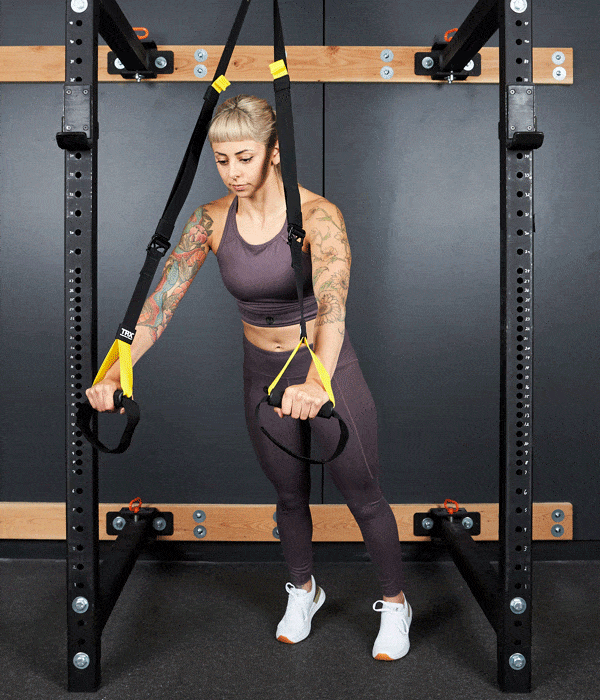
Lipsey prefers these to normal pushups because they activate the whole core, including the rib cage area and the serratus anterior, a small muscle that helps your shoulders work properly.
You can also adjust the level of difficulty by walking your feet backward (harder) or forward (easier), making it simpler to focus on what’s happening with your core.
The move: Stand behind a TRX and grab the handles. Lean forward with your arms straight and the handles in front of you. Lower yourself down until your thumbs touch your chest, keeping your body in a straight line, then press back up. To make this a more intense core exercise, you can push your arms further forward in front of you. Aim for a total of 12–15 repetitions.
STABILITY BALL CRUNCHES

Most trainers aren’t big fans of the standard crunch or situp. But moving them to a stability ball has its advantages, according to Atalie. By stretching the front of your core as you lean back over the ball, you fire up the muscles and enhance the contraction in the crunch, she says. “Because the thoracic spine extends over the ball, it opens the chest and creates a better range of motion reversing rounded posture from desk sitting,” she adds.
The move: Lie with your mid-back on the stability ball, crossing your hands in front of your chest or with your hands behind your head. Allow your torso to fully extend over the ball, creating an arch. Then, exhale and draw in the abs, tuck your chin, and lift your chest toward the ceiling to come up. Complete 15–25 repetitions.
Check out “Workout Routines” in the MyFitnessPal app to discover and log workouts or build your own with exercises that fit your goals.
